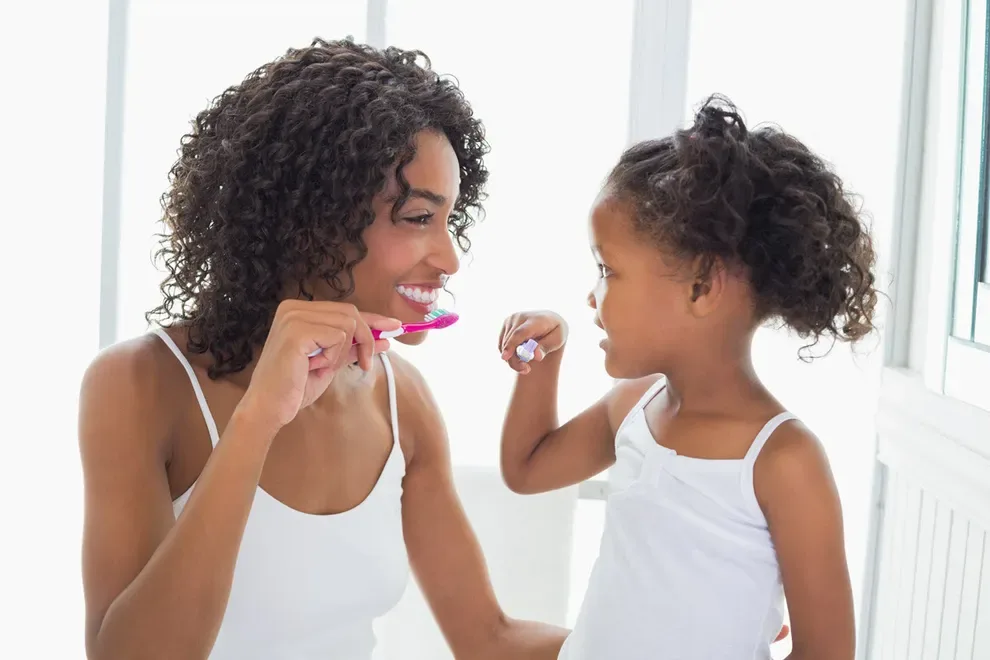What Are the Long-Term Effects of a Pacifier - Benefits & Risks

Table of Contents
- Benefits of Pacifiers
- Risks of Prolonged Use
- Safety Tips
- Weaning Your Baby Off a Pacifier
- References
Infants and newborns have a natural reflex of sucking non-nutritive items such as the fingers, toes and hands. Because this habit is associated with a calming effect, pacifiers have been used for centuries to fulfill the innate desire of children to suck.
Even before the dawn of the anti-pacifier movement in the early 1900s, any items that safely allowed infants and toddlers to be suckle were viewed as beneficial. Today, although there are mixed opinions about pacifier use, nearly 80% of children in the Western world use them.
You can introduce your baby to the binky of a suitable kind early, a few weeks after birth. The majority of children lose interest in the pacifiers between ages 2 and 4. But in some instances, you may need to wean your baby off a soother.
Pacifiers come in multiple shapes, sizes, and even styles. Open shield, teething, collapsible, multi-piece and lovey are popular types available in the market. Having more than one kind does no harm, but before you introduce your baby to a pacifier, it’s essential to understand the long-term effects of using one.
Benefits of Pacifiers
Doctors and child experts acknowledge the benefits that pacifiers bring to the very young, including some that can be lifesaving. These run-of-the-mill comforters act as pain relievers for infants, and they also help develop sound feeding habits among premature babies.
Parents might argue that pacifiers perform the crucial role of calming a crying baby, especially when out in public or when others in the house are trying to sleep.
There’s also evidence that pacifiers help prevent Sudden Infant Death Syndrome (SIDs).
Pacifiers work relatively well in pain relief and anxiety prevention among children. According to the American Academy of Pediatrics publication, infants younger than 6 months will feel less pain when undergoing minor procedures and when given pacifiers.
Suppose you’re taking your baby for any painful hospital procedure such as immunization or going to an unfamiliar place. In that case, a pacifier will be handy in helping you to calm the baby and prevent anxiety.
Infants born before the due date might have extended hospital stays and poor feeding as their systems are not fully developed. The use of pacifiers among preemies has substantially reduced hospital stay with a faster transition from enteral feeds to bottle-feeding.
The American Academy of Pediatrics recommends giving your baby a pacifier at the onset of sleep to minimize the risk of SIDS. Importantly, don’t re-insert the pinky if the baby spits it out. Pacifiers help maintain a patent airway and reduce the likelihood of sleep apnea that’s thought to be responsible for sudden infant death syndrome.
If you want to perform some tasks around the house with a fussy baby, a pacifier can play the trick and soothe them even to sleep. Again, a soother can make air travel more comfortable for children as it aids in relieving ear pain due to air pressure changes. Adults usually swallow or yawn intentionally to ease the pain, but infants can’t do such. That’s where the pacifier comes in.
Risks of Prolonged Pacifier Use
These little binkies have pitfalls too, but most of them appear only after prolonged use. For example:
Dental Problems: Using pacifiers beyond 36 months of age is associated with a higher incidence of dental malocclusion. Your child is likely to have an improper bite or protrusion of the front teeth regardless of the type of pacifier. Previously, pacifiers were thought to promote early childhood caries, but current studies show no association. The American Dental Association and AAP discourage the use of these items past 4 years of age.
Speech and language difficulties: Prolonged use of pacifiers promotes forward thrusting of the tongue between the teeth. Therefore, your child might find it difficult to pronounce/s/ and /z/ sounds later in life. Again, a pacifier depresses expressive language skills, primarily if the child uses it for a better part of the day. Instead of verbalizing needs, the child might use gestures to express themselves since the pacifier acts as a barrier.
Middle ear infection: Increased occurrence of otitis media is associated with prolonged use of pacifiers. As your baby sucks, secretions from the pharynx are likely to flow into the middle ear, promoting the multiplication of pathogens leading to otitis media.
General Safety Tips for Using a Pacifier
The decision about whether to use a pacifier for your infant is entirely a personal choice.
After weighing the benefits and the risks, you can decide to get one for your kid. Some of the things to observe when using a pacifier include:
Ensure the shield or guard is sizeable enough so that the whole pacifier does not go into the child’s mouth
Do not fix the pacifier on the baby’s body, whether on the clothing or around the neck, using a cord or clip.
Check the pacifier parts before inserting them into the mouth to ensure they won’t come off.
Never replace the lid and nipple of a bottle feeder with a pacifier
Weaning Your Baby Off a Pacifier
To avoid the adverse long-term effects of pacifiers, it’s vital to wean your toddler off them at the proper time and age. Some babies will self-wean at age 2-4. But if your child doesn’t seem to lose interest in pacifiers past age 4, it’s time to intervene.
Your pediatrician can help you decide when to start weaning your baby off the pacifier depending on their developmental milestones.
As you plan to wean your baby off the binky, observe their sucking habits. Consider:
Whether they suck for absolute comfort or as just a mere distraction?
If they try withdrawing or withholding the soother when he or she doesn’t need to suck. If so, you may want to offer another distractor, such as a rattle or mobile.
Whether to employee a teething ring if you think the issue is sore gums and teeth.
Your toddler might cry when you withdraw the pacifier. If playing with them or a replacement does not work, give them back the soother.
Don’t take away the soothie when the baby is fussy or irritated. You might worsen the upset or go the cold turkey way, instead withdraw the pacifier gradually.
